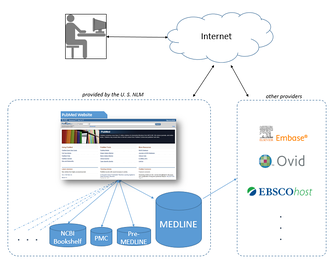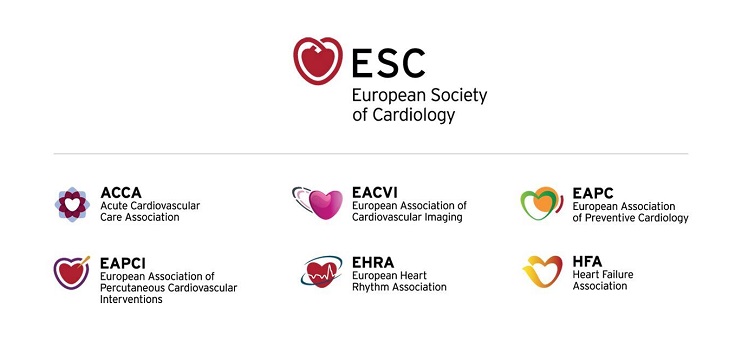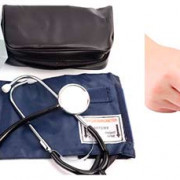Как искать в интернете достоверную медицинскую информацию
Содержание:
- Similar articles
- Alternative interfaces
- Cited by 9 articles
- Data mining of PubMed
- What’s New
- Cited by 8 articles
- Similar articles
- Content
- Abstract
- How to access TOXNET information
- Archived Publications
- Similar articles
- Skip registration by using a 3rd party sign in option
- Simple NCBI Directory
- Biomedical Topics
- Research Overview
- Simple NCBI Directory
- Cited by 248 articles
- Выводы
Similar articles
-
Multidisciplinary management of hepatoblastoma in children: Experience from a developing country.
Shanmugam N, Scott JX, Kumar V, Vij M, Ramachandran P, Narasimhan G, Reddy MS, Kota V, Munirathnam D, Kelgeri C, Sundaram K, Rela M.
Shanmugam N, et al.
Pediatr Blood Cancer. 2017 Mar;64(3). doi: 10.1002/pbc.26249. Epub 2016 Oct 26.
Pediatr Blood Cancer. 2017.PMID: 27781375
Clinical Trial.
-
New concepts and outcomes for children with hepatoblastoma based on the experience of a tertiary center over the last 21 years.
Tannuri AC, Cristofani LM, Teixeira RA, Odone Filho V, Tannuri U.
Tannuri AC, et al.
Clinics (Sao Paulo). 2015 Jun;70(6):387-92. doi: 10.6061/clinics/2015(06)01. Epub 2015 Jun 1.
Clinics (Sao Paulo). 2015.PMID: 26106955
Free PMC article. -
Survival after liver transplantation for hepatoblastoma: a 2-center experience.
Browne M, Sher D, Grant D, Deluca E, Alonso E, Whitington PF, Superina RA.
Browne M, et al.
J Pediatr Surg. 2008 Nov;43(11):1973-81. doi: 10.1016/j.jpedsurg.2008.05.031.
J Pediatr Surg. 2008.PMID: 18970927
Clinical Trial.
-
Fetal and neonatal hepatic tumors.
Isaacs H Jr.
Isaacs H Jr.
J Pediatr Surg. 2007 Nov;42(11):1797-803. doi: 10.1016/j.jpedsurg.2007.07.047.
J Pediatr Surg. 2007.PMID: 18022426
Review.
-
Efficacy of neoadjuvant therapy and surgical rescue for locally advanced hepatoblastomas: 10 year single-center experience and literature review.
Ayllon Teran D, Gómez Beltran O, Ciria Bru R, Mateos González E, Peña Rosa MJ, Luque Molina A, López Cillero P, Briceño Delgado J.
Ayllon Teran D, et al.
World J Gastroenterol. 2014 Aug 7;20(29):10137-43. doi: 10.3748/wjg.v20.i29.10137.
World J Gastroenterol. 2014.PMID: 25110441
Free PMC article.Review.
Alternative interfaces

MEDLINE is one of the databases which are accessible via PubMed. Several companies provide access to MEDLINE through their platforms.
The National Library of Medicine leases the MEDLINE information to a number of private vendors such as Embase, Ovid, Dialog, EBSCO, Knowledge Finder and many other commercial, non-commercial, and academic providers. As of October 2008, more than 500 licenses had been issued, more than 200 of them to providers outside the United States. As licenses to use MEDLINE data are available for free, the NLM in effect provides a free testing ground for a wide range of alternative interfaces and 3rd party additions to PubMed, one of a very few large, professionally curated databases which offers this option.
Lu identifies a sample of 28 current and free Web-based PubMed versions, requiring no installation or registration, which are grouped into four categories:
- Ranking search results, for instance: eTBLAST; MedlineRanker; MiSearch;
- Clustering results by topics, authors, journals etc., for instance: Anne O’Tate; ClusterMed;
- Enhancing semantics and visualization, for instance: EBIMed; MedEvi.
- Improved search interface and retrieval experience, for instance, askMEDLINE BabelMeSH; and PubCrawler.
Cited by 9 articles
-
Hepatoblastoma: current knowledge and promises from preclinical studies.
Calvisi DF, Solinas A.
Calvisi DF, et al.
Transl Gastroenterol Hepatol. 2020 Jul 5;5:42. doi: 10.21037/tgh.2019.12.03. eCollection 2020.
Transl Gastroenterol Hepatol. 2020.PMID: 32632393
Free PMC article.Review.
-
Application of photodynamic therapy for liver malignancies.
Zou H, Wang F, Zhou JJ, Liu X, He Q, Wang C, Zheng YW, Wen Y, Xiong L.
Zou H, et al.
J Gastrointest Oncol. 2020 Apr;11(2):431-442. doi: 10.21037/jgo.2020.02.10.
J Gastrointest Oncol. 2020.PMID: 32399283
Free PMC article.Review.
-
LIN28B gene polymorphisms modify hepatoblastoma susceptibility in Chinese children.
Yang Z, Deng Y, Zhang K, Bai Y, Zhu J, Zhang J, Xin Y, Li L, He J, Wang W.
Yang Z, et al.
J Cancer. 2020 Mar 15;11(12):3512-3518. doi: 10.7150/jca.42798. eCollection 2020.
J Cancer. 2020.PMID: 32284747
Free PMC article. -
HMGA2 Polymorphisms and Hepatoblastoma Susceptibility: A Five-Center Case-Control Study.
Li L, Zhuo Z, Yang Z, Zhu J, He X, Yang Z, Zhang J, Xin Y, He J, Zhang T.
Li L, et al.
Pharmgenomics Pers Med. 2020 Feb 11;13:51-57. doi: 10.2147/PGPM.S241100. eCollection 2020.
Pharmgenomics Pers Med. 2020.PMID: 32104047
Free PMC article. -
m6A mRNA methylation regulates CTNNB1 to promote the proliferation of hepatoblastoma.
Liu L, Wang J, Sun G, Wu Q, Ma J, Zhang X, Huang N, Bian Z, Gu S, Xu M, Yin M, Sun F, Pan Q.
Liu L, et al.
Mol Cancer. 2019 Dec 23;18(1):188. doi: 10.1186/s12943-019-1119-7.
Mol Cancer. 2019.PMID: 31870368
Free PMC article.
Data mining of PubMed
Alternative methods to mine the data in PubMed use programming environments such as Matlab, Python or R. In these cases, queries of PubMed are written as lines of code and passed to PubMed and the response is then processed directly in the programming environment. Code can be automated to systematically queries with different keywords such as disease, year, organs, etc. A recent publication (2017) found that the proportion of cancer-related entries in PubMed has risen from 6% in the 1950s to 16% in 2016.
The data accessible by PubMed can be mirrored locally using an unofficial tool such as MEDOC.
Millions of PubMed records augment various open data datasets about open access, like Unpaywall. Data analysis tools like Unpaywall Journals are used by libraries to assist with big deal cancellations: libraries can avoid subscriptions for materials already served by instant open access via open archives like PubMed Central.
What’s New
Visit our What’s New page to see all recent MeSH developments including the most recent ones listed below
-
2020 MeSH files are now in production
- The MeSH Browser now displays 2020 MeSH and 2019 MeSH vocabularies
- Reports of MeSH changes are available from our What’s New page
- All 2020 MeSH files are now available via FTP download
-
MeSH in Resource Description Format(RDF) is now in production
- The downloadable files contain a full representation of XML MeSH in RDF format
- An open MeSH API is available for retrieving MeSH data
- You can use our SPARQL query editor for querying MeSH data
-
MeSH on Demand 2.0 has been re-engineered and improved in response to your suggestions.
- Matching MeSH terms are now highlighted in response to your submitted text
- MeSH headings now include links to scope notes
- Custom PubMed searches are more easily made
- Term expansion and tree-based searching features have been added
- You can now display of similar article titles from PubMed
Cited by 8 articles
-
Adolescent Dietary Habit-induced Obstetric and Gynecologic Disease (ADHOGD) as a New Hypothesis-Possible Involvement of Clock System.
Fujiwara T, Ono M, Mieda M, Yoshikawa H, Nakata R, Daikoku T, Sekizuka-Kagami N, Maida Y, Ando H, Fujiwara H.
Fujiwara T, et al.
Nutrients. 2020 May 2;12(5):1294. doi: 10.3390/nu12051294.
Nutrients. 2020.PMID: 32370105
Free PMC article. -
The Effect of a High-Fat Diet on the Fatty Acid Composition in the Hearts of Mice.
Pakiet A, Jakubiak A, Mierzejewska P, Zwara A, Liakh I, Sledzinski T, Mika A.
Pakiet A, et al.
Nutrients. 2020 Mar 20;12(3):824. doi: 10.3390/nu12030824.
Nutrients. 2020.PMID: 32245049
Free PMC article. -
Role of environmental factors & oxidative stress with respect to in vitro fertilization outcome.
Kumar S, Mishra V, Thaker R, Gor M, Perumal S, Joshi P, Sheth H, Shaikh I, Gautam AK, Verma Y.
Kumar S, et al.
Indian J Med Res. 2018 Dec;148(Suppl):S125-S133. doi: 10.4103/ijmr.IJMR_1864_17.
Indian J Med Res. 2018.PMID: 30964090
Free PMC article. -
Time Restriction of Food Intake During the Circadian Cycle Is a Possible Regulator of Reproductive Function in Postadolescent Female Rats.
Fujiwara T, Nakata R, Ono M, Mieda M, Ando H, Daikoku T, Fujiwara H.
Fujiwara T, et al.
Curr Dev Nutr. 2018 Nov 26;3(4):nzy093. doi: 10.1093/cdn/nzy093. eCollection 2019 Apr.
Curr Dev Nutr. 2018.PMID: 30963143
Free PMC article. -
Epidemiologic Factors Associated with Endometriosis in East Asia.
Yen CF, Kim MR, Lee CL.
Yen CF, et al.
Gynecol Minim Invasive Ther. 2019 Jan-Mar;8(1):4-11. doi: 10.4103/GMIT.GMIT_83_18. Epub 2019 Jan 23.
Gynecol Minim Invasive Ther. 2019.PMID: 30783582
Free PMC article.Review.
Similar articles
-
Evolving epidemiology and transmission dynamics of coronavirus disease 2019 outside Hubei province, China: a descriptive and modelling study.
Zhang J, Litvinova M, Wang W, Wang Y, Deng X, Chen X, Li M, Zheng W, Yi L, Chen X, Wu Q, Liang Y, Wang X, Yang J, Sun K, Longini IM Jr, Halloran ME, Wu P, Cowling BJ, Merler S, Viboud C, Vespignani A, Ajelli M, Yu H.
Zhang J, et al.
Lancet Infect Dis. 2020 Jul;20(7):793-802. doi: 10.1016/S1473-3099(20)30230-9. Epub 2020 Apr 2.
Lancet Infect Dis. 2020.PMID: 32247326
Free PMC article. -
Epidemiological Characteristics and Incubation Period of 7015 Confirmed Cases With Coronavirus Disease 2019 Outside Hubei Province in China.
Nie X, Fan L, Mu G, Tan Q, Wang M, Xie Y, Cao L, Zhou M, Zhang Z, Chen W.
Nie X, et al.
J Infect Dis. 2020 Jun 16;222(1):26-33. doi: 10.1093/infdis/jiaa211.
J Infect Dis. 2020.PMID: 32339231
Free PMC article. -
Rapid asymptomatic transmission of COVID-19 during the incubation period demonstrating strong infectivity in a cluster of youngsters aged 16-23 years outside Wuhan and characteristics of young patients with COVID-19: A prospective contact-tracing study.
Huang L, Zhang X, Zhang X, Wei Z, Zhang L, Xu J, Liang P, Xu Y, Zhang C, Xu A.
Huang L, et al.
J Infect. 2020 Jun;80(6):e1-e13. doi: 10.1016/j.jinf.2020.03.006. Epub 2020 Apr 10.
J Infect. 2020.PMID: 32283156
Free PMC article. -
The First 75 Days of Novel Coronavirus (SARS-CoV-2) Outbreak: Recent Advances, Prevention, and Treatment.
Yan Y, Shin WI, Pang YX, Meng Y, Lai J, You C, Zhao H, Lester E, Wu T, Pang CH.
Yan Y, et al.
Int J Environ Res Public Health. 2020 Mar 30;17(7):2323. doi: 10.3390/ijerph17072323.
Int J Environ Res Public Health. 2020.PMID: 32235575
Free PMC article.Review.
-
The origin, transmission and clinical therapies on coronavirus disease 2019 (COVID-19) outbreak — an update on the status.
Guo YR, Cao QD, Hong ZS, Tan YY, Chen SD, Jin HJ, Tan KS, Wang DY, Yan Y.
Guo YR, et al.
Mil Med Res. 2020 Mar 13;7(1):11. doi: 10.1186/s40779-020-00240-0.
Mil Med Res. 2020.PMID: 32169119
Free PMC article.Review.
Content
In addition to MEDLINE, PubMed provides access to:
- older references from the print version of Index Medicus, back to 1951 and earlier
- references to some journals before they were indexed in Index Medicus and MEDLINE, for instance Science, BMJ, and Annals of Surgery
- very recent entries to records for an article before it is indexed with Medical Subject Headings (MeSH) and added to MEDLINE
- a collection of books available full-text and other subsets of NLM records
- PMC citations
Many PubMed records contain links to full text articles, some of which are freely available, often in PubMed Central and local mirrors, such as Europe PubMed Central.
Information about the journals indexed in MEDLINE, and available through PubMed, is found in the NLM Catalog.
As of 27 January 2020, PubMed has more than 30 million citations and abstracts dating back to 1966, selectively to the year 1865, and very selectively to 1809. As of the same date, 20 million of PubMed’s records are listed with their abstracts, and 21.5 million records have links to full-text versions (of which 7.5 million articles are available, full-text for free). Over the last 10 years (ending 31 December 2019), an average of nearly 1 million new records were added each year. Approximately 12% of the records in PubMed correspond to cancer-related entries, which have grown from 6% in the 1950s to 16% in 2016.
Other significant proportion of records correspond to «chemistry» (8.69%), «therapy» (8.39%), and «infection» (5%).[citation needed]
In 2016, NLM changed the indexing system so that publishers are able to directly correct typos and errors in PubMed indexed articles.
PubMed has been reported to include some articles published in predatory journals. MEDLINE and PubMed policies for the selection of journals for database inclusion are slightly different. Weaknesses in the criteria and procedures for indexing journals in PubMed Central may allow publications from predatory journals to leak into PubMed.
Abstract
Hepatoblastoma is the most common primary malignant hepatic tumor of infancy and childhood, occurring predominantly in the first two years of life. The management of hepatoblastoma has changed markedly over the last 3 decades; neoadjuvant chemotherapy is now standard, particularly in unresectable tumors resulting in considerable preoperative tumor shrinkage and sometimes near total ablation of the tumor. A 20 month old infant was incidentally found to have a 7.6cm right sided retroperitoneal tumor on routine screening ultrasonography for left ureteral stenosis. Serum alpha fetoprotein was elevated. Biopsy revealed hepatoblastoma, mixed epithelial and embryonal type without mesenchymal elements. He underwent neoadjuvant chemotherapy. Although the tumor had decreased considerably in size, close proximity to major vascular structures precluded safe resection. Liver transplantation was performed; the explanted liver showed complete tumor necrosis with no residual malignancy. The postoperative course was uncomplicated and he is continuing on sixth cycle of chemotherapy.
How to access TOXNET information
| Comprehensive Toxicology Information |
Help for HSDB Users in PubChem (PDF) Help for HSDB Users in PubChem (Web Page) Video Tutorial |
|---|---|
| Toxicology Literature |
Help for TOXLINE Users in PubMed (PDF) Help for TOXLINE Users in PubMed (Web Page) |
| Breastfeeding & Drugs |
Help for LactMed Users in Bookshelf (PDF)Help for LactMed Users in Bookshelf (Web Page) |
| Chemical Information |
Help for ChemIDplus Users in PubChem (PDF) Help for ChemIDplus Users in PubChem (Web Page) |
| Developmental Toxicology Literature |
Help for DART Users in PubMed (PDF) Help for DART Users in PubMed (Web Page) |
| Drug-Induced Liver Injury | LiverTox in Bookshelf LiverTox has been migrated to BookShelf |
| Chemical Releases & Mapping | TOXMAP was retired.
Underlying data remains accessible through their original resources: Government of Canada National Pollutant Release Inventory (NPRI), U.S. Census Bureau, U.S. EPA Clean Air Markets Program, U.S. EPA Geospatial Applications, U.S. EPA Facilities Registry System (FRS) , U.S. EPA Superfund Program, U.S. EPA Toxics Release Program (TRI), U.S. NIH NCI Surveillance, Epidemiology, and End Results Program (SEER), U.S. Nuclear Regulatory Commission (NRC) GIS application users can overlay the data in their own GIS applications. |
| Comparative Toxicogenomics | TOXNET’s CTD was retired. Visit CTD at NC State University. |
| Household Product Safety | The content of HPD is available from the original content provider Consumer Product Information Database https://www.whatsinproducts.com/ |
| Occupational Exposure To Chemicals | HazMap was retired. The content of Haz-Map is still provided by the original content provider |
| Dietary Supplement Information |
Dietary Supplement Ingredient Database (DSID): The Dietary Supplement Ingredient Database (DSID) (https://dsid.od.nih.gov) provides estimated levels of ingredients in dietary supplement products sold in the United States. These statistically predicted estimates may differ from labeled amounts and are based on chemical analysis of nationally representative products. This site is now being updated and maintained for access by the NIH Office of Dietary Supplements Dietary Supplement Label Database (DSLD): The Dietary Supplement Label Database (DSLD) (https://dsld.od.nih.gov) includes full label derived information from dietary supplement products marketed in the U.S. with a Web-based user interface that provides ready access to label information. This site is now being updated and maintained for access by the NIH Office of Dietary Supplements |
| Risk Assessment | TOXNET’s IRIS was retired. Visit IRIS at EPA. TOXNET ITER: The content of ITER will be available from the original content provider Toxicology Excellence for Risk Assessment Database http://www.iter.tera.org/ |
| Animal Testing Alternatives | ALTBIB |
| Archived, No Longer Updated |
Help for CCRIS Users in PubChem (PDF) Help for CCRIS Users in PubChem (Web Page) CPDB was retired. Access CPDB data at https://www.toxinfo.io and from the EPA at https://www.epa.gov/chemical-research/distributed-structure-searchable-toxicity-dsstox-database Help for GENE-TOX Users in PubChem (PDF)Help for GENE-TOX Users in PubChem (Web Page) |
Archived Publications
- 2014 DailyMed/RxNorm Jamboree Workshop Last updated: September 29, 2014
- 2015 DailyMed/RxNorm Jamboree Workshop Last updated: October 14, 2015
- 2016 DailyMed/RxNorm Jamboree Workshop Last updated: November 11, 2018
- 2017 DailyMed/RxNorm Jamboree Workshop Last updated: November 11, 2018
- Alphabetic Listing of MeSH Last updated: December 6, 2016
- Changed Descriptors — 2015 Last updated: October 30, 2018
- Changes in ASCII MeSH Format Last updated: April 9, 2016
- Deleted Descriptors — 2018 Last updated: January 6, 2017
- Files Available to Download Last updated: November 29, 2018
- MeSH Qualifiers with Scope Notes Last updated: June 13, 2017
- MeSH Staff Presentations and Publications Last updated: June 22, 2016
- MeSH Staff Presentations and Publications (Archive) Last updated: April 24, 2013
- SPL/DailyMed Jamboree Workshop 2013 Last updated: December 3, 2016
- Use of Medical Subject Headings For Cataloging Last updated: October 29, 2019
Similar articles
-
Current problems of food intake in young women in Japan: Their influence on female reproductive function.
Fujiwara T, Nakata R.
Fujiwara T, et al.
Reprod Med Biol. 2004 Aug 10;3(3):107-114. doi: 10.1111/j.1447-0578.2004.00063.x. eCollection 2004 Sep.
Reprod Med Biol. 2004.PMID: 29699189
Free PMC article. -
Environment, lifestyle and infertility—an inter-generational issue.
Sharpe RM, Franks S.
Sharpe RM, et al.
Nat Cell Biol. 2002 Oct;4 Suppl:s33-40. doi: 10.1038/ncb-nm-fertilityS33.
Nat Cell Biol. 2002.PMID: 12479613
Review.
-
Lifestyle factors and reproductive health: taking control of your fertility.
Sharma R, Biedenharn KR, Fedor JM, Agarwal A.
Sharma R, et al.
Reprod Biol Endocrinol. 2013 Jul 16;11:66. doi: 10.1186/1477-7827-11-66.
Reprod Biol Endocrinol. 2013.PMID: 23870423
Free PMC article.Review.
-
.
Zavos PM.
Zavos PM.
Fertil Contracept Sex. 1989 Feb;17(2):133-8.
Fertil Contracept Sex. 1989.PMID: 12281878
French.
-
Knowledge about infertility risk factors, fertility myths and illusory benefits of healthy habits in young people.
Bunting L, Boivin J.
Bunting L, et al.
Hum Reprod. 2008 Aug;23(8):1858-64. doi: 10.1093/humrep/den168. Epub 2008 May 10.
Hum Reprod. 2008.PMID: 18469334
Skip registration by using a 3rd party sign in option
Arizona State UniversityAzusa Pacific UniversityBoise State UniversityBoston UniversityBrown UniversityCalifornia Institute of TechnologyCarnegie Mellon UniversityCase Western Reserve UniversityCincinnati Children’s Hospital Medical CenterColorado State UniversityColumbia UniversityCornell UniversityDartmouth CollegeDuke UniversityEmory UniversityEnvironmental Protection AgencyEurope PMC Funders Group granteesFlorida International UniversityFlorida State UniversityGeorgetown UniversityGeorgia institute of TechnologyGeorgia State UniversityHHS AMSHoward Hughes Medical InstituteIndiana UniversityIowa State UniversityJohns HopkinsLawrence Berkeley National LaboratoryLouisiana State UniversityMayo ClinicMedical College of WisconsinMedical University of South CarolinaNASANational Institute of Standards and TechnologyNational Science Foundation (NSF)NIH & eRA CommonsNorth Carolina State UniversityNorth Dakota State UniversityNorthwestern UniversityOhio State UniversityORCiDOregon Health & Science UniversityOregon State UniversityPayPalPenn StatePurdue University Main CampusRice UniversityRowan UniversityRutgers, The State University of New JerseySouthern Methodist UniversityStanford UniversityStony Brook UniversityTemple UniversityTexas A & M UniversityTexas Christian UniversityTexas State University — San MarcosThe Rockefeller UniversityThe University of ArizonaThe University of MemphisTufts UniversityUnited States Department of AgricultureUniversity of Alabama at BirminghamUniversity of Alaska Statewide SystemUniversity of Arkansas for Medical SciencesUniversity of California, DavisUniversity of California, San FranciscoUniversity of California, Santa CruzUniversity of California-IrvineUniversity of California-Los AngelesUniversity of California-San DiegoUniversity of ChicagoUniversity of Cincinnati Main CampusUniversity of Colorado at BoulderUniversity of FloridaUniversity Of HawaiiUniversity of Illinois at Urbana-ChampaignUniversity of IowaUniversity of Kansas Medical CenterUniversity of Maryland Baltimore CountyUniversity of Massachusetts Medical SchoolUniversity of MichiganUniversity of MinnesotaUniversity of Nebraska Medical CenterUniversity of Nebraska-LincolnUniversity of North Carolina at Chapel HillUniversity of PennsylvaniaUniversity of PittsburghUniversity of RochesterUniversity of South FloridaUniversity of Southern CaliforniaUniversity of TennesseeUniversity of Texas at AustinUniversity of Texas at San AntonioUniversity of Texas Health Science Center At HoustonUniversity of Texas Health Science Center At San AntonioUniversity of Texas M.D. Anderson Cancer CenterUniversity of Texas Medical Branch At GalvestonUniversity of UtahUniversity of VirginiaUniversity of WashingtonUniversity of Wisconsin-MadisonUniversity of Wisconsin-MilwaukeeUtah Valley UniversityVanderbilt UniversityVirginia Commonwealth UniversityVirginia Polytechnic Institute and State UniversityWashington State UniversityWeill Cornell Medical College
Simple NCBI Directory
- NCBI Education
- NCBI Help Manual
- NCBI Handbook
- Training & Tutorials
- Submit Data
- Chemicals & Bioassays
- Data & Software
- DNA & RNA
- Domains & Structures
- Genes & Expression
- Genetics & Medicine
- Genomes & Maps
- Homology
- Literature
- Proteins
- Sequence Analysis
- Taxonomy
- Variation
- PubMed
- Bookshelf
- PubMed Central
- BLAST
- Nucleotide
- Genome
- SNP
- Gene
- Protein
- PubChem
- Genetic Testing Registry
- GenBank
- Reference Sequences
- Gene Expression Omnibus
- Genome Data Viewer
- Human Genome
- Mouse Genome
- Influenza Virus
- Primer-BLAST
- Sequence Read Archive
- About NCBI
- Research at NCBI
- NCBI News & Blog
- NCBI FTP Site
- NCBI on Facebook
- NCBI on Twitter
- NCBI on YouTube
- Privacy Policy
Biomedical Topics
Computational Molecular Biology
-
BLAST
A tool that finds regions of similarity between biological sequences. The program compares nucleotide or protein sequences to sequence databases and calculates the statistical significance.
-
GenBank
A database of nucleotide sequences.
-
Molecular Structure and Function
A database of macromolecular 3D structures, as well as tools for their visualization and comparative analysis.
-
Taxonomy Database
A database of taxonomic names of lineages of organisms represented in NCBI’s sequence databases.
-
Conserved Domain Database (CDD)
A database to identify the conserved domains present in a protein sequence.
-
Reference Sequences (RefSeq)
A collection of reference sequences for genomes, gene transcripts, and proteins.
-
Vector Alignment Search Tool (VAST)
A computer algorithm developed at NCBI and used to identify similar protein 3-dimensional structures («similar structures») by purely geometric criteria and to identify distant homologs that cannot be recognized by sequence comparison.
Health Data Standards and Natural Language Processing
-
Health Information Technology and Health Data Standards at NLM
Clinical vocabulary standards and tools that support implementation of Meaningful Use, C-CDA, and other programs
Human Genome Resources
-
Online Mendelian Inheritance in Man (OMIM)
A guide to genes and inherited disorders.
-
Gene
Gene integrates information from a wide range of species. A record may include nomenclature, Reference Sequences (RefSeqs), maps, pathways, variations, phenotypes, and links to genome-, phenotype-, and locus-specific resources worldwide.
-
Genome Data Viewer
A genome browser supporting the exploration and analysis of more than 580 eukaryotic RefSeq genome assemblies.
- More Human Genome resources at NCBI
Toxicology and Environmental Health
-
Toxicology and Environmental Health Information Program
Comprehensive toxicology and environmental health information.
Research Overview
The research program in the Computational Biology Branch is carried out by Senior Investigators, tenure track Investigators, Staff Scientists, Postdoctoral Fellows, and students. The program focuses on theoretical, analytical and applied approaches to a broad range of fundamental problems in molecular biology.
The expertise of the group is concentrated in sequence analysis, protein structure/function analysis, chemical informatics, and genome analysis. Research interests further cover a wide range of topics in computational biology and information science. These include, but are not limited to, database searching algorithms, sequence signal identification, mathematical models of evolution, statistical methods in virology, dynamic behavior of chemical reaction systems, statistical text-retrieval algorithms, protein structure and function prediction, comparative genomics, taxonomic trees, population genetics, and systems biology.
Many of the basic research projects conducted by CBB investigators serve to enhance and strengthen NCBI’s suite of publicly available databases and software application tools. Collaborative research efforts, among NCBI investigators as well as with the external research community, have led to the development of innovative algorithms (BLAST, PSI-BLAST, VAST, and COGs), novel research approaches (text neighboring) and fundamental resources (PubChem and CDD) that have transformed the field of computational biology. Algorithms and applications currently under development have the potential to further advance scientific discovery.
Members of the CBB contribute significantly to the validity and reliability of NCBI’s online resources by reviewing the quality and accuracy of the data deposited in the databases, as well as the accuracy of the information used to annotate the data. Members also provide leadership and guidance to the extramural community by planning and organizing scientific consortia to determine the most effective use of public sequence resources for large-scale or high-throughput experimental biology. Researchers collaborate to define new areas of research and identify appropriate computational mechanisms to address them.
Simple NCBI Directory
- NCBI Education
- NCBI Help Manual
- NCBI Handbook
- Training & Tutorials
- Submit Data
- Chemicals & Bioassays
- Data & Software
- DNA & RNA
- Domains & Structures
- Genes & Expression
- Genetics & Medicine
- Genomes & Maps
- Homology
- Literature
- Proteins
- Sequence Analysis
- Taxonomy
- Variation
- PubMed
- Bookshelf
- PubMed Central
- BLAST
- Nucleotide
- Genome
- SNP
- Gene
- Protein
- PubChem
- Genetic Testing Registry
- GenBank
- Reference Sequences
- Gene Expression Omnibus
- Genome Data Viewer
- Human Genome
- Mouse Genome
- Influenza Virus
- Primer-BLAST
- Sequence Read Archive
- About NCBI
- Research at NCBI
- NCBI News & Blog
- NCBI FTP Site
- NCBI on Facebook
- NCBI on Twitter
- NCBI on YouTube
- Privacy Policy
Cited by 248 articles
-
Longer incubation period of coronavirus disease 2019 (COVID-19) in older adults.
Kong TK.
Kong TK.
Version 2. Aging Med (Milton). 2020 May 22;3(2):102-109. doi: 10.1002/agm2.12114. eCollection 2020 Jun.
Aging Med (Milton). 2020.PMID: 32661509
Free PMC article. -
Re-positive Cases of Nucleic Acid Tests in Discharged Patients With COVID-19: A Follow-Up Study.
Qiao XM, Xu XF, Zi H, Liu GX, Li BH, Du X, Tian ZH, Liu XY, Luo LS, Wang X.
Qiao XM, et al.
Front Med (Lausanne). 2020 Jun 23;7:349. doi: 10.3389/fmed.2020.00349. eCollection 2020.
Front Med (Lausanne). 2020.PMID: 32656223
Free PMC article. -
The Anatomic Pathology laboratory adjustments in the era of COVID-19 pandemic: The experience of a laboratory in a Portuguese central hospital.
Lamas NJ, Esteves S, Alves JR, Costa FE, Tente D, Fonseca P, Vizcaíno JR.
Lamas NJ, et al.
Ann Diagn Pathol. 2020 Jul 1;48:151560. doi: 10.1016/j.anndiagpath.2020.151560. Online ahead of print.
Ann Diagn Pathol. 2020.PMID: 32645559
Free PMC article. -
The experience of women infected by the COVID-19 during pregnancy in Brazil: a qualitative study protocol.
Freitas-Jesus JV, Rodrigues L, Surita FG.
Freitas-Jesus JV, et al.
Version 2. Reprod Health. 2020 Jul 8;17(1):108. doi: 10.1186/s12978-020-00958-z.
Reprod Health. 2020.PMID: 32641133
Free PMC article. -
Chopping the tail: how preventing superspreading can help to maintain COVID-19 control.
Kain MP, Childs ML, Becker AD, Mordecai EA.
Kain MP, et al.
medRxiv. 2020 Jul 3:2020.06.30.20143115. doi: 10.1101/2020.06.30.20143115. Preprint.
medRxiv. 2020.PMID: 32637966
Free PMC article.
Выводы
Чему можно доверять:
- сайту Министерства здравоохранения Российской Федерации (стандартам оказания медицинской помощи и критериям оценки качества оказания медицинской помощи);
- клиническим рекомендациям Министерства здравоохранения Российской Федерации;
- сайтам с инструкциями к лекарственным препаратам (Vidal, РЛС, «ЛС ГЭОТАР»);
- электронным медицинским базам данных;
- сайтам ВОЗ и Роспотребнадзора.
Чего лучше избегать:
- обсуждений на форумах;
- статей в «Википедии»;
- рекламных материалов;
- публикаций без ссылок на источники доказательной медицины.
Искать информацию о здоровье можно и нужно — но только на «правильных» сайтах с достоверными данными. И конечно, всегда помните, что врач в лечении ориентируется не только на стандарты и критерии качества, но и на свой опыт и особенности пациента.






